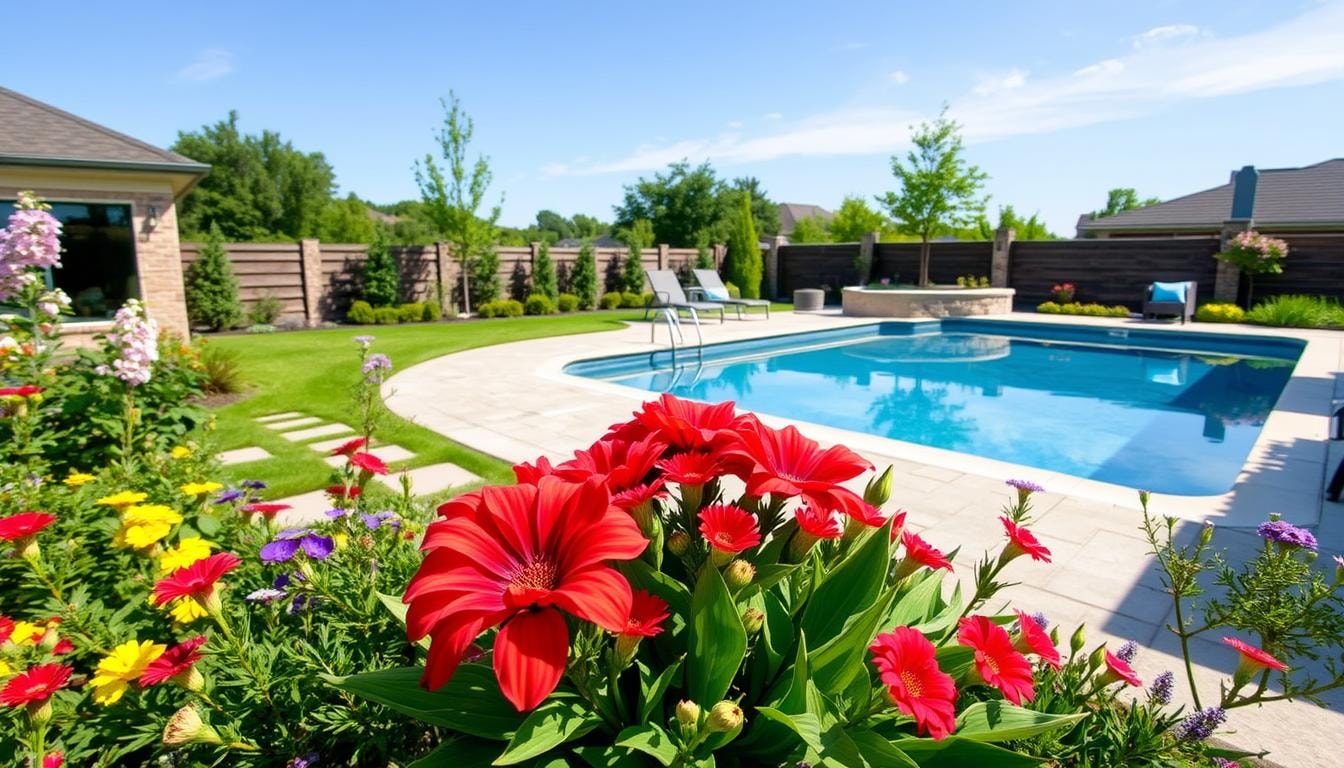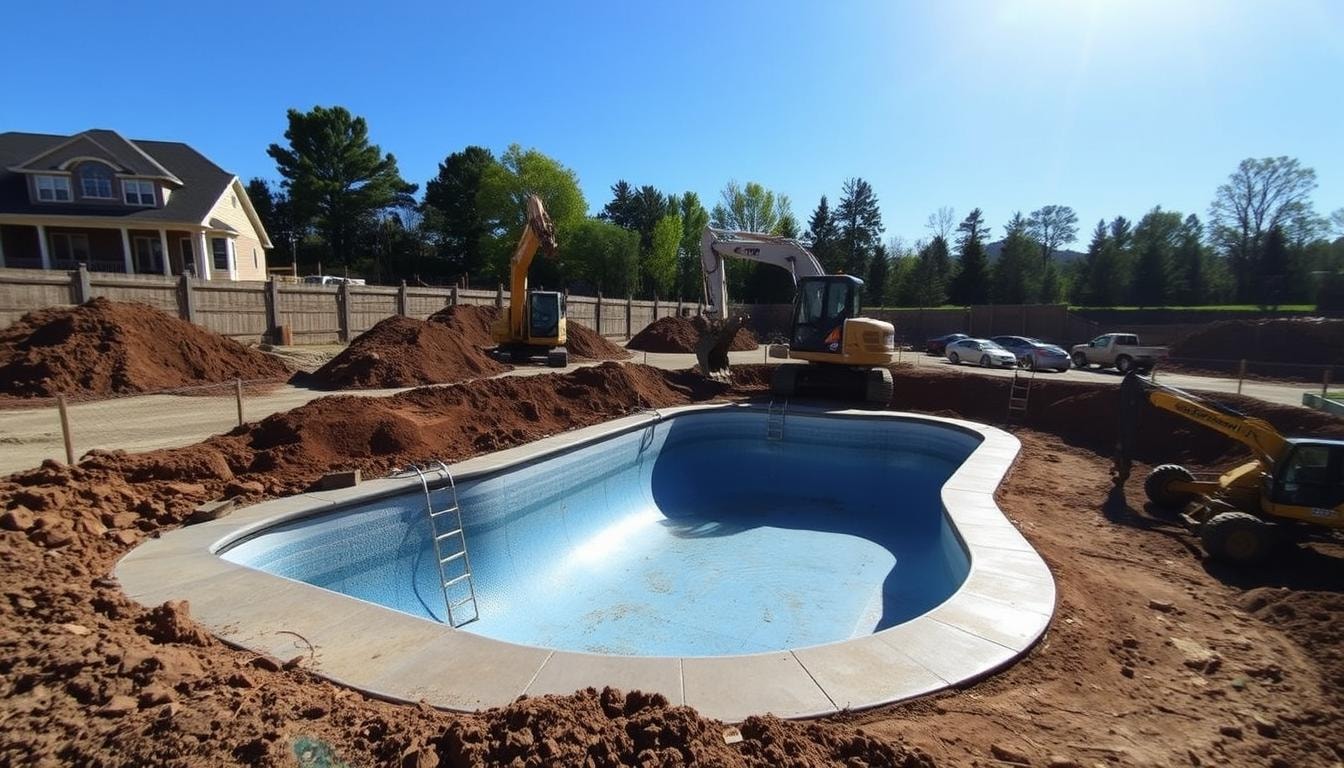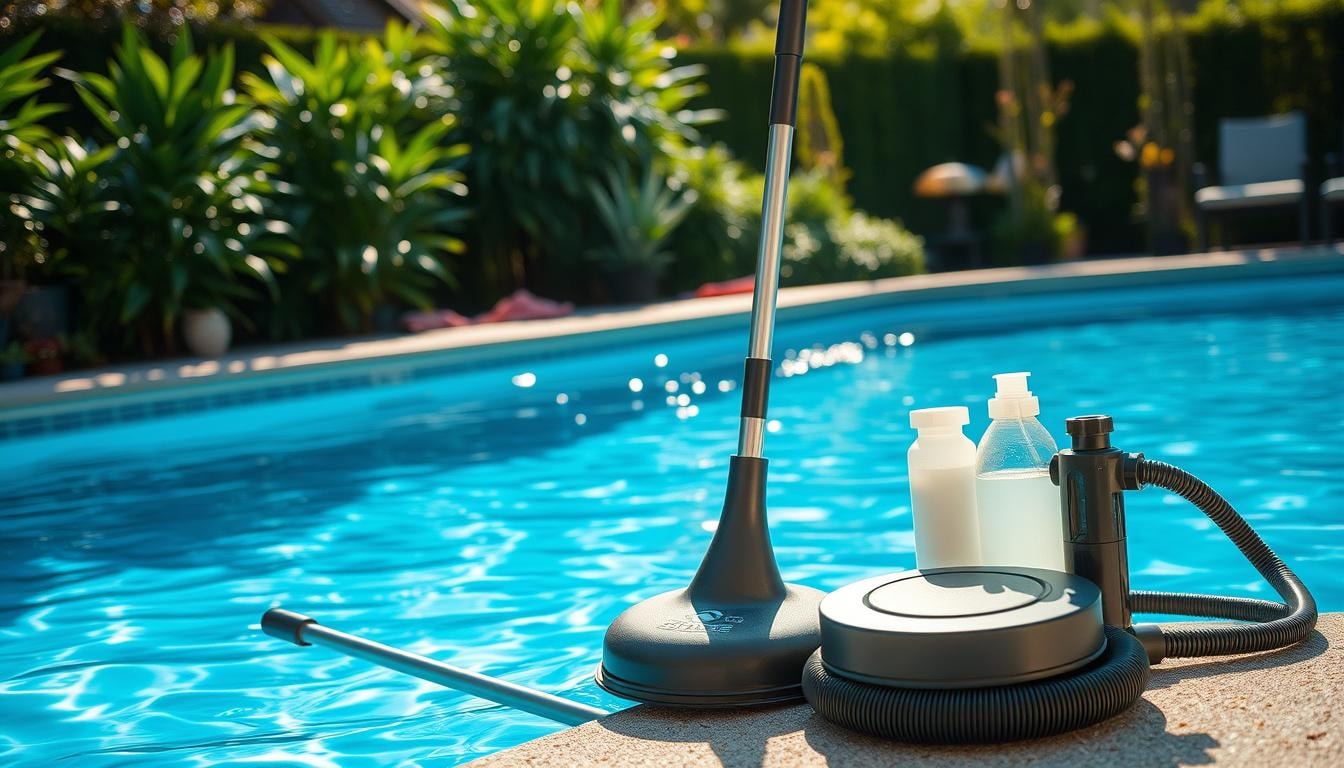Inground Pool Installation Near You
Can’t find what you are looking for?
How It Works
-
Answer a few questions about your home project.
-
Within seconds, get matched with top-rated local pros.
-
Compare quotes and choose the best pro for the job.
Inground Pool Installation In Your Area
Inground Pool Installation: A Complete Guide
Meta Description: Discover the essentials of inground pool installation, from planning to completion. Learn about costs, types, and expert tips for your dream backyard oasis.

Thinking about adding a pool to your backyard? It’s exciting, but the process can seem overwhelming. This guide will help you understand the costs and steps involved in installing an inground pool.
We’ll cover everything from planning to completion. You’ll learn how to make smart choices and ensure your project goes smoothly. Let’s dive into the world of inground pools!
Key Takeaways
-
01
Inground pool installation costs can range from $700 to $125,000, depending on the type of pool, additional features, and site-specific factors.
-
02
Obtaining the necessary permits and adhering to local regulations is crucial before starting any pool construction project.
-
03
Proper planning and preparation, including selecting the right pool type and location, are vital for a successful inground pool installation.
-
04
The installation process involves excavation, laying the pool shell, plumbing, electrical work, and deck/landscaping construction.
-
05
Ongoing maintenance and care are essential to keep your inground pool in top condition and ensure its longevity.
Understanding the Types of Inground Pools
Homeowners have three main choices for inground pools: fiberglass, vinyl liner, and concrete/gunite. Each option has its own pros and cons. Let’s explore these choices to help you decide.
Concrete/Gunite Pools
Concrete pools are the top choice for many homeowners. They offer flexible design options and great durability. These pools use a steel rod frame and plastered surface.
Concrete pools can be quite pricey. However, they offer elegant finish options like tiling or aggregate. With proper care, concrete pools can last a very long time.
Fiberglass Pools
Fiberglass pools are made in a factory and installed on-site. They cost 30 to 50% less than concrete pools. Installation only takes about two days.
Many people choose fiberglass pools for their affordability and quick setup. They also have lower maintenance costs over time compared to concrete pools.
Vinyl Liner Pools
Vinyl liner pools use a vinyl sheet between the water and pool structure. They have a sand or cement-like floor underneath. These pools are the second least expensive option after fiberglass.
Installation costs range from $20,000 to $50,000, depending on location and size. Vinyl pools can be built in any size or shape, offering more design flexibility.
Planning and Preparation
Proper planning is key for inground pool installation. This phase involves getting permits, choosing the location, and designing your dream pool.
Obtaining Necessary Permits
Building an inground pool requires approval from your local city or town. You may need permits for the pool, water lines, and gas lines.
Check zoning laws and HOA rules in your area. This ensures a smooth and compliant pool installation process.
Choosing the Right Location
The perfect spot can make your pool more functional and appealing. Consider sun exposure, wind patterns, utility lines, and visibility from your home.
Position the pool to maximize enjoyment and complement your outdoor space. This will create a true backyard oasis.
Designing Your Dream Pool
Measure your space and identify potential obstacles. Decide on features like depth, entrances, lights, jets, or fountains.
A professional pool designer can help turn your vision into reality. They’ll create a practical layout that meets all necessary considerations.
Careful planning lays the foundation for a successful pool installation. It ensures your pool meets your needs and follows local laws.
With proper groundwork, you can move forward confidently. Your dream pool will soon become a reality.
Excavation and Site Preparation

Building an inground pool starts with excavation and site preparation. This step lays the groundwork for the entire project. It ensures proper pool placement and readies the site for installation.
Excavating the pool site is a major challenge in pool installation. It’s costly and time-consuming, requiring careful planning and heavy-duty equipment. Soil testing is crucial before digging begins.
Professional teams use specialized equipment like backhoes and excavators. They carefully dig out the pool area. Different pool types need specific tools and techniques for best results.
- Professional pool digger teams utilize a variety of specialized equipment, including backhoes, skid steers, and excavators, to meticulously excavate the pool area.
- Excavating pools of different types, such as concrete, fiberglass, or vinyl liner, requires tailored tools and techniques to ensure the best results.
- Once the digging is complete, the team thoroughly cleans the site, removing all soil, rocks, and debris to prepare the area for the next steps of pool construction.
Hiring professionals is recommended due to the job’s complexity. Getting permits and following local codes are essential for safety. Careful planning helps avoid delays and unexpected challenges.
Consider future pool elements during excavation. This includes decking materials and elevations. Doing so ensures smooth integration with the overall design. DIY excavation is risky and can lead to costly mistakes.
A thorough approach to excavation sets the stage for success. It paves the way for the next phases of pool construction.
Installing the Pool Shell
The pool material you choose affects the installation process. Each type requires careful planning for a long-lasting result. Concrete, fiberglass, and vinyl liner pools have unique installation methods.
Concrete/Gunite Installation
Concrete and gunite pools are sprayed on-site using a rebar framework. This allows for high customization. The process includes excavation, rebar setting, and applying the concrete mixture.
The surface is finished with plaster or tile. This method is more complex but results in a durable pool shell.
Fiberglass Pool Installation
Fiberglass pools are made off-site and transported to your property. They’re lowered into an excavated hole by crane. This process is faster than concrete construction.
Key steps include site prep and connecting plumbing and electrical components. The pre-formed shell makes installation quicker.
Vinyl Liner Installation
Vinyl liner pools use a sheet stretched over a sand or cement-like floor. The liner is secured around the walls for a watertight seal. This method is often more cost-effective than concrete or fiberglass.
However, the liner may need replacement every 5-10 years. It can be more prone to damage over time.
Professional installation is crucial for all pool types. It ensures durability and proper function. Attention to detail and following local codes are essential for successful installation.
Plumbing and Equipment Installation
Proper installation of pool plumbing and equipment is vital for your inground pool’s performance. This step involves setting up the pool pump, pool filtration system, and other essential components. These ensure efficient pool circulation.
The pool pump installation is crucial. It circulates water throughout the system. The pump must be correctly sized and positioned for optimal water flow and pressure.
The pool filtration system also needs proper installation. This may involve setting up a sand, cartridge, or DE filter. Correct placement of the system’s parts is essential.
- Ensure correct pool plumbing installation to prevent leaks and maximize water circulation.
- Properly size and position the pool pump to achieve necessary water flow and pressure.
- Install the pool filtration system, including filter tank, valve, and plumbing, for clean water.
- Consider additional pool equipment like heaters and integrate them into the overall system.
Careful planning of pool plumbing and equipment installation is key. It creates a well-functioning inground pool. Your family will enjoy years of relaxation in your new pool.
Deck and Landscaping
A well-designed deck and thoughtful landscaping can transform your pool area. These elements create a relaxing oasis for entertainment. They elevate your pool experience and form a cohesive outdoor living space.
Deck Materials and Design
Choosing the right deck materials is crucial for function and looks. Popular options include concrete, pavers, and wood. Concrete decks are durable and low-maintenance.
Pavers offer customizable looks with various shapes, colors, and textures. Wooden decks add a warm, natural touch to the pool area.
Consider built-in seating, fire pits, or water features for your deck design. Include elements that match your home’s style and the surrounding landscape.
Landscaping Ideas
- Incorporate lush greenery, such as palm trees, flowering shrubs, and ornamental grasses, to create a tropical or Mediterranean-inspired atmosphere.
- Add water features like a small waterfall or a bubbling fountain to introduce the soothing sound of flowing water.
- Use low-maintenance plants and drought-tolerant species to create a visually appealing and sustainable backyard landscape.
- Strategically place lighting, such as path lights or spotlights, to illuminate the pool area and extend the use of the space into the evening hours.
- Incorporate hardscaping elements like natural stone, decorative boulders, or pergolas to add visual interest and define different zones within the outdoor living area.
A well-planned deck and landscape design can create an inviting outdoor space. It will reflect your style and boost enjoyment of your backyard oasis.
Electrical and Lighting
Proper electrical work and lighting are vital for a safe inground pool. Correct wiring and grounding prevent electrical shocks. Ground Fault Circuit Interrupters (GFCIs) are crucial for protection against hazards.
Hire a licensed electrician with pool expertise. They know how to handle unique pool electrical needs. Use waterproof materials to avoid shorts and corrosion.
Regular inspections maintain safety and functionality. Pool lighting improves nighttime swimming and visibility. Options include incandescent, halogen, LED, and fiber optic lights.
Underwater lights need an IPX8 waterproof rating. New installations must not exceed 12V A/C or 30V D/C. Prioritizing pool electrical and pool lighting creates a safe, appealing area.
This approach meets all pool safety and pool illumination needs. Your pool will be both beautiful and secure.
Safety Features
Inground pools offer fun and relaxation, but safety must come first. The right safety features can prevent accidental drownings, especially with young children. Pool owners can enhance safety with fencing, gates, covers, and alarms.
Pool Fencing and Gates
Proper pool fencing restricts unauthorized access to the pool area. Options include vinyl panels, mesh, wood, and wrought iron bars. Self-closing and self-latching pool gates are crucial for keeping the pool area secure.
These features reduce the risk of unsupervised entries by children. They create an effective barrier around the pool, ensuring safety for everyone.
Pool Covers and Alarms
Pool covers and alarms add an extra layer of protection. Safety covers can support over 1,000 pounds and typically last more than a decade. They prevent accidental falls and keep the pool free of debris.
Smart pool alarms detect unauthorized entries by sensing changes in water movement and pressure. They provide homeowners with timely alerts, enhancing pool safety.
Combining fencing, covers, and alarms creates a secure environment for families and guests. These measures give pool owners peace of mind and ensure a safer swimming experience.
Water and Chemical Treatments

Proper pool water balance is vital for a healthy and fun swimming experience. Regular use of chemicals like chlorine is essential. Saltwater pools offer a gentler alternative for those seeking a more natural option.
Chlorine is the most common pool sanitizer, killing bacteria and viruses effectively. Maintain chlorine levels between 1-3 PPM for safe disinfection. Bromine is popular for hot tubs, lacking chlorine’s smell.
Ozone and mineral-based treatments can complement traditional chlorine use. These alternatives offer different sanitizing options for pool owners.
Good water chemistry is crucial for a balanced pool. Keep pH between 7.4 and 7.6. Alkalinity should stay between 100 and 150 PPM.
Maintain calcium hardness between 150 and 400 PPM. For best chlorine effectiveness, keep water temperature between 26°C to 30°C.
Test chlorine and pH levels two to three times weekly during peak season. Check after heavy use or rainfall too. Cloudy water often signals low chlorine or poor chemistry.
Regular pool maintenance ensures safe, comfortable swimming for everyone. Invest in quality chemicals and monitoring tools. Your pool will stay in top shape all season long.
Maintenance and Care
Maintaining an inground pool is crucial for safe and enjoyable swimming. Regular cleaning and equipment upkeep ensure your pool’s longevity. Follow these simple steps to keep your pool in top shape.
Regular Cleaning
Skim the surface and vacuum the pool at least once a week. Daily cleaning is ideal, but weekly works for most people. Check and balance water chemistry regularly.
Monitor pH levels, alkalinity, and sanitizer concentrations. This helps maintain water quality and prevents algae growth.
Equipment Maintenance
- Pool Pump: Run the pump around the clock for best results. Actual runtime depends on your budget, pool size, and equipment.
- Pool Filter: Clean and maintain filters regularly. This ensures efficient water circulation and filtration, keeping the pool clean and clear.
- Pool Chemicals: Keep chlorine, pH, and other chemicals at proper levels. This is vital for water sanitation and algae prevention.
Plan pool care before summer vacations to keep it clean and balanced. For trips longer than a week, ask someone to check on the pool.
Professional pool services can handle maintenance if you prefer a hands-off approach. They offer pool opening, closing, and mid-season care.
Let FindPros Help with Your Inground Pool Project
Overwhelmed by the inground pool cost, vinyl liner pool options, and the entire process of installation? Let FindPros match you with the right local professionals to bring your backyard oasis to life.
Answer a few simple questions about your swimming pool needs – whether it’s an average pool, lap pool, or infinity pool – and we’ll connect you with top-rated pros in your area. Compare vinyl pools cost, installation time, and the total cost, as well as any added features like diving boards or tanning ledges.
FindPros makes it easy to find the perfect pool installer who fits your budget and vision, saving you time and money. Get started today and turn your backyard into the relaxing retreat you deserve.
Conclusion
An inground pool can turn your backyard into a backyard oasis. It offers a refreshing escape right at home. Careful planning is key for successful inground pool installation.
Homeowners should know about concrete/gunite, fiberglass, and vinyl liner pools. This knowledge helps in making informed decisions. Professionals bring expertise to create dream outdoor living spaces.
Hiring experts for pool installation may cost more initially. However, it can lead to long-term savings. They minimize mistakes and future repairs.
Consider safety features, water treatments, and ongoing maintenance. These factors ensure years of enjoyment from your inground pool. Transform your backyard into a true oasis.
Frequently Asked Questions (Inground Pool Installation)
MOST POPULAR CITIES
Browse by State- Alameda
- Costa Mesa
- Laguna Beach
- Orange
- Alhambra
- Culver City
- Lancaster
- Oroville
- Anaheim
- Daly City
- Livermore
- Oxnard
- Antioch
- Davis
- Lodi
- Pacific Grove
- Arcadia
- Downey
- Lompoc
- Palm Springs
- Bakersfield
- El Centro
- Long Beach
- Palmdale
- Barstow
- El Cerrito
- Los Angeles
- Palo Alto
- Belmont
- El Monte
- Malibu
- Pasadena
- Berkeley
- Escondido
- Martinez
- Petaluma
- Beverly Hills
- Eureka
- Marysville
- Pomona
- Brea
- Fairfield
- Menlo Park
- Port Hueneme
- Buena Park
- Fontana
- Merced
- Rancho Cucamonga
- Burbank
- Fremont
- Modesto
- Red Bluff
- Calexico
- Fresno
- Monterey
- Redding
- Calistoga
- Fullerton
- Mountain View
- Redlands
- Carlsbad
- Garden Grove
- Napa
- Redondo Beach
- Carmel
- Glendale
- Needles
- Redwood City
- Chico
- Hayward
- Newport Beach
- Richmond
- Chula Vista
- Hollywood
- Norwalk
- Riverside
- Claremont
- Huntington Beach
- Novato
- Roseville
- Compton
- Indio
- Oakland
- Sacramento
- Concord
- Inglewood
- Oceanside
- Salinas
- Corona
- Irvine
- Ojai
- San Bernardino
- Coronado
- La Habra
- Ontario
- San Clemente